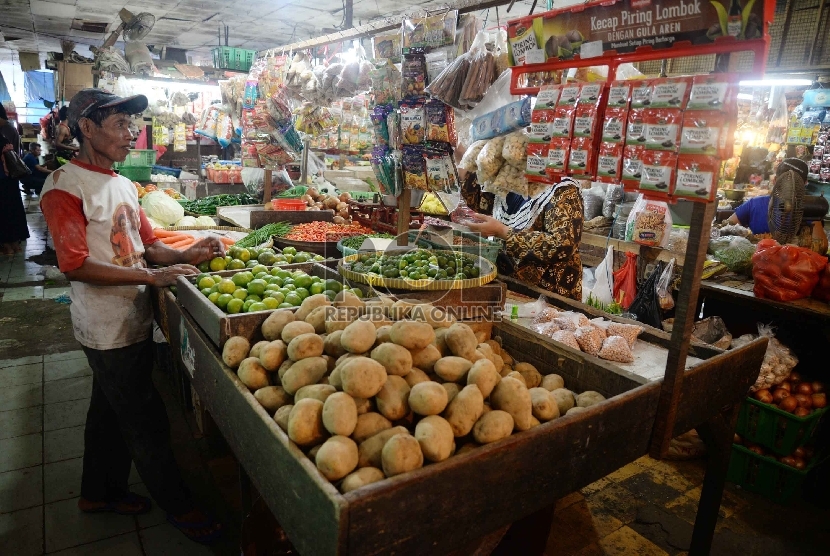REPUBLIKA.CO.ID, JAKARTA -- Five ministers of the working cabinet gathered at Bank Indonesia's office on Wednesday to discuss the projected inflation in 2015 and the future challenges in 2016.
The meeting was attended by Coordinating Minister for Economic Affairs Darmin Nasution, Finance Minister Bambang Brodjonegoro, Trade Minister Thomas Lembong, Home Affairs Minister Tjahjo Kumolo, Transportation Minister Ignasius Jonan, and State Logistics Agency (Bulog) President Director Djarot Kusumayakti.
"The projected inflation until the end of December can be maintained. The inflation will stand at three percent," Nasution stated here on Wednesday.
Nasution affirmed that the inflation rate this year would remain at three percent.
Meanwhile, Finance Minister Brodjonegoro noted that a discussion on economy, food prices, transportation fare, exchange rate, and other areas was held during the meeting.
With regard to macro assumptions in the 2016 State Budget, he remarked that Indonesia's inflation was pegged at 4.7 percent.
"I am optimistic that the target can be maintained," the minister stated.
He argued that the annual inflation would stand between 2.9-3 percent.
"Volatility in food prices will have the greatest influence on the 2016 inflation rate," the minister emphasized.
Earlier, the Central Statistics Agency (BPS) had said it was possible to achieve Bank Indonesia's four percent inflation target, give or take 1 percent, for 2015, citing that inflation had reached two percent during the January-September period.
"I think it will be achieved. At the end of September, the inflation rate had reached 2.24 percent. We still have three months left," BPS Deputy Chief for Distribution and Service Statistics Sasmito Hadi Wibowo affirmed here on Thursday.
He noted that a possibility still existed for the country to record a deflation in October. However, infrastructure development may lead to an increase in the inflation rate, although the hike will be relatively small.
"Based on the wholesale price index (IHPB), the construction index has risen significantly. The index will continue to rise and have an impact on household goods, such as cement. This will likely make it difficult for the country to record a deflation. I think there will be inflation, albeit relatively small," he explained.
The IHPB for building and construction materials rose 0.15 percent in September from a month earlier, driven by the increase in the prices of water tanks at 0.97 percent, air conditioners at 0.96 percent, electrical apparatuses at 0.74 percent, and sand at 0.65 percent, he remarked.
The IHPB for raw materials, consumer goods, and capital goods rose by 0.87 percent, 2.89 percent, and 0.58 percent, respectively in August 2015, he stated.
With the inflation being kept under check and productivity increasing, the economic growth in the third quarter will be higher than in the previous quarter, he added.


